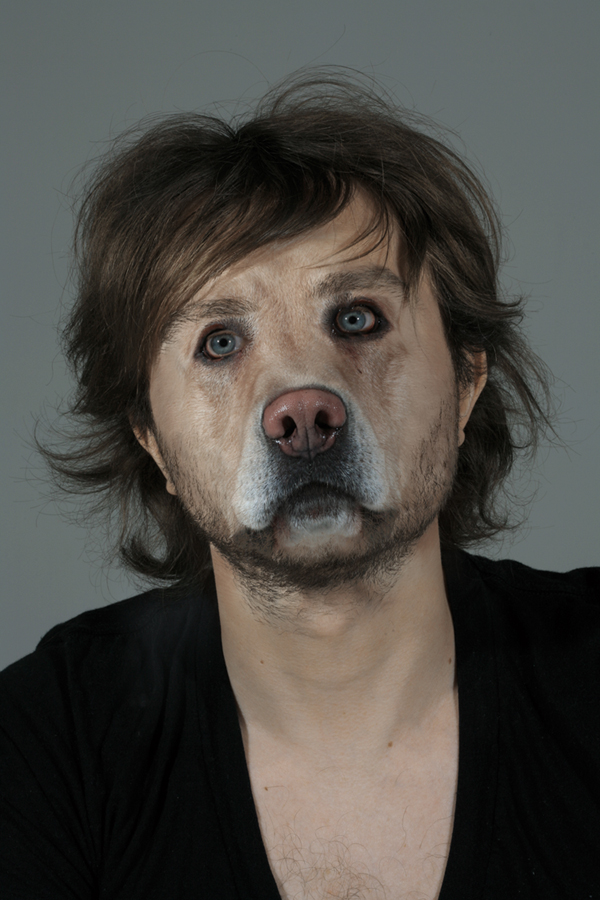The concept of a "dog with the face of a human" has captured the imagination of many, stirring curiosity and intrigue across various platforms. This bizarre idea often leads to humorous images, memes, and even some debates about the nature of animal appearances. In this article, we will explore the origins of this phenomenon, the science behind it, and why it resonates with so many people. From art to biology, we will delve into the various facets of this captivating subject.
In recent years, the internet has been flooded with pictures and videos of dogs that seem to have human-like facial features. These images often go viral, leading to discussions about genetic anomalies, selective breeding, and even the cultural significance of such representations. But why do we find this combination so fascinating? What psychological and social factors are at play? In this article, we will answer these questions and more.
Join us as we embark on this journey to uncover the truth behind the "dog with the face of a human." We'll examine real-life examples, scientific explanations, and the impact of human perception on this phenomenon. Get ready to dive deep into an intriguing topic that blends humor, science, and art!
Table of Contents
- What is a Dog with the Face of a Human?
- Origin of the Phenomenon
- The Science Behind Canine Features
- Psychological Appeal of Human-like Features
- Cultural Significance of Human-Dog Imagery
- Real-Life Examples of Human-faced Dogs
- Memes and Viral Content on Social Media
- Conclusion: Embracing the Unusual
What is a Dog with the Face of a Human?
The phrase "dog with the face of a human" typically refers to various images or representations where dogs exhibit facial traits that are strikingly similar to human features. This can be a result of selective breeding, genetic mutations, or even the way light and angles play tricks on our perception. While it may sound absurd, there have been numerous instances where people claim to have seen dogs that appear to possess human-like expressions.
Origin of the Phenomenon
The interest in dogs resembling humans is not a new occurrence. Historically, various cultures have depicted animals in ways that reflect human characteristics. This notion can be traced back to ancient mythology, where creatures often combined human and animal features. In modern times, this fascination has been amplified by the rise of social media, where images can quickly go viral.
Historical Context
- Mythical creatures from ancient civilizations.
- Art and literature featuring anthropomorphic animals.
- The evolution of pets as family members.
The Science Behind Canine Features
From a scientific perspective, the phenomenon of dogs appearing to have human-like features can be attributed to several factors. Genetic mutations can cause specific breeds to develop unique traits that could be interpreted as human-like. Additionally, the concept of pareidolia, where the human brain recognizes familiar patterns, plays a significant role in how we perceive these images.
Genetic Factors
- Selective breeding for physical traits.
- Mutations affecting facial structure.
- Variations within breeds leading to unique appearances.
Psychological Appeal of Human-like Features
The psychological aspect of why humans are drawn to animals with human-like features is a fascinating area of study. This appeal can be explained by several psychological theories, including the uncanny valley effect, where humanoid figures that are not quite human elicit both intrigue and discomfort.
Emotional Connection
- Relatability and empathy towards animals.
- The desire to anthropomorphize pets.
- Emotional bonds formed with human-like expressions.
Cultural Significance of Human-Dog Imagery
In many cultures, the imagery of dogs with human features has significant symbolic meaning. They often represent loyalty, companionship, and the blending of human and animal worlds. This symbolism can be seen in various art forms, literature, and even in modern advertising that aims to evoke emotional responses.
Symbolism in Art and Media
- Use of anthropomorphic animals in storytelling.
- The impact of dog-human imagery in marketing.
- Artistic representations reflecting societal views on pets.
Real-Life Examples of Human-faced Dogs
There have been several instances where dogs have gained popularity for their human-like appearances. These cases often make headlines and attract media attention, leading to broader discussions about the phenomenon.
Famous Cases
- The viral sensation of "dog with human smile."
- Breed-specific examples showcasing unique traits.
- Social media influencers featuring human-like dogs.
Memes and Viral Content on Social Media
The rise of social media has played a crucial role in spreading the concept of dogs with human faces. Memes and viral content featuring these images often tap into humor and absurdity, making them highly shareable.
Impact on Popular Culture
- The role of memes in shaping perceptions.
- How viral trends influence public interest.
- Community engagement through humorous content.
Conclusion: Embracing the Unusual
In conclusion, the phenomenon of a "dog with the face of a human" is a multifaceted topic that intertwines science, psychology, culture, and humor. As we have explored, the fascination with this idea is rooted in various historical, scientific, and emotional factors. It reflects our desire to connect with animals on a deeper level while also highlighting the quirks of nature and perception.
We encourage you to share your thoughts on this fascinating subject! Have you encountered any dogs that seem to have human-like features? Leave a comment below, share this article with your friends, and explore more intriguing topics on our site!
Thank you for reading, and we hope to see you back here for more engaging content!
Jake Below Deck Season 9: A Comprehensive Look At His Journey
Phoebe Dynevor Movies And TV Shows: A Comprehensive Guide To Her Career
What Losing 20 Pounds Looks Like: A Comprehensive Guide


